Vintage fast fashion informs Avoidstreet's first solo show in The Hague
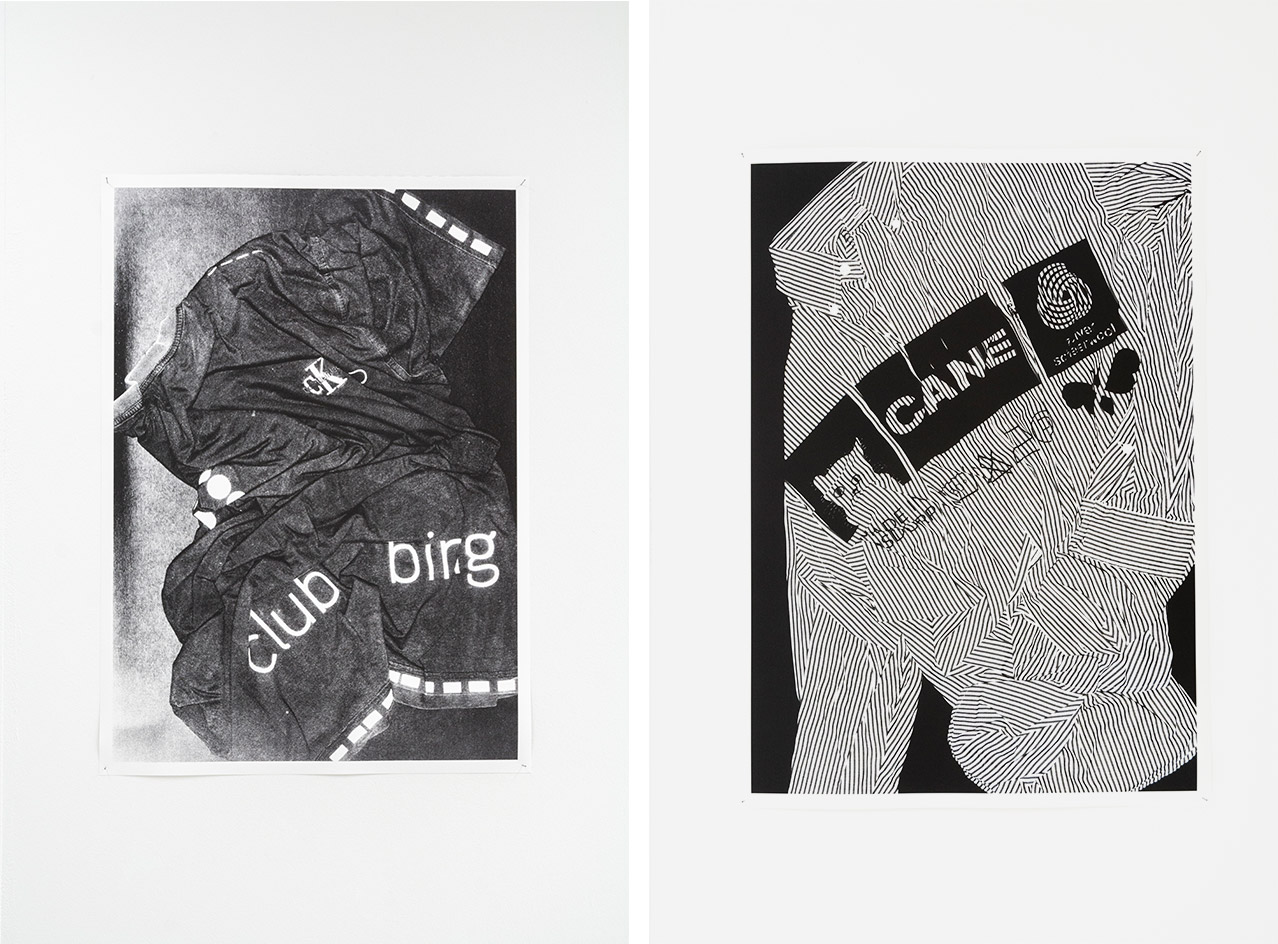
A new generation of fashion makers, unschooled in design but unbridled in creativity, are offering some resistance to the prevailing pop tyranny of shows and sales. The duo behind Symonds Pearmain, for instance, have ushered in a renewed focus on collaboration with their clothes positioned as works of art shared via dance, performance and video. Anne Imhof has staged a brutalist bacchanal in Tate Modern's Tanks, installing the model Eliza Douglas head-to-toe in Balenciaga who sang and writhed through the colossal space. Moses Quiquine is applying new narratives to archival couture, splicing a Charles Frederick Worth dress with African textiles to create a revised ethnographic fable for our times.
The same amalgamation of art and fashion is found in Avoidstreet’s first solo show, open now at Lauwer gallery in The Hague. The label’s Amsterdam-based founder Eduardo Leon treats the endless source of fast fashion garments available in vintage stores like medium resolution images on a hard drive. ‘It was interesting to use fast fashion brands as factories, using what they had already made,’ he says. Launched in 2017, Avoidstreet operates as demi-street-couture, bringing together the anxieties of sustainability with a graphic gall. ‘It’s very one to one – when people come to the studio, the first thing I look at is how they dress. I’m not trying to bring a certain style that is my own. I’m trying to emphasise what’s already there.’
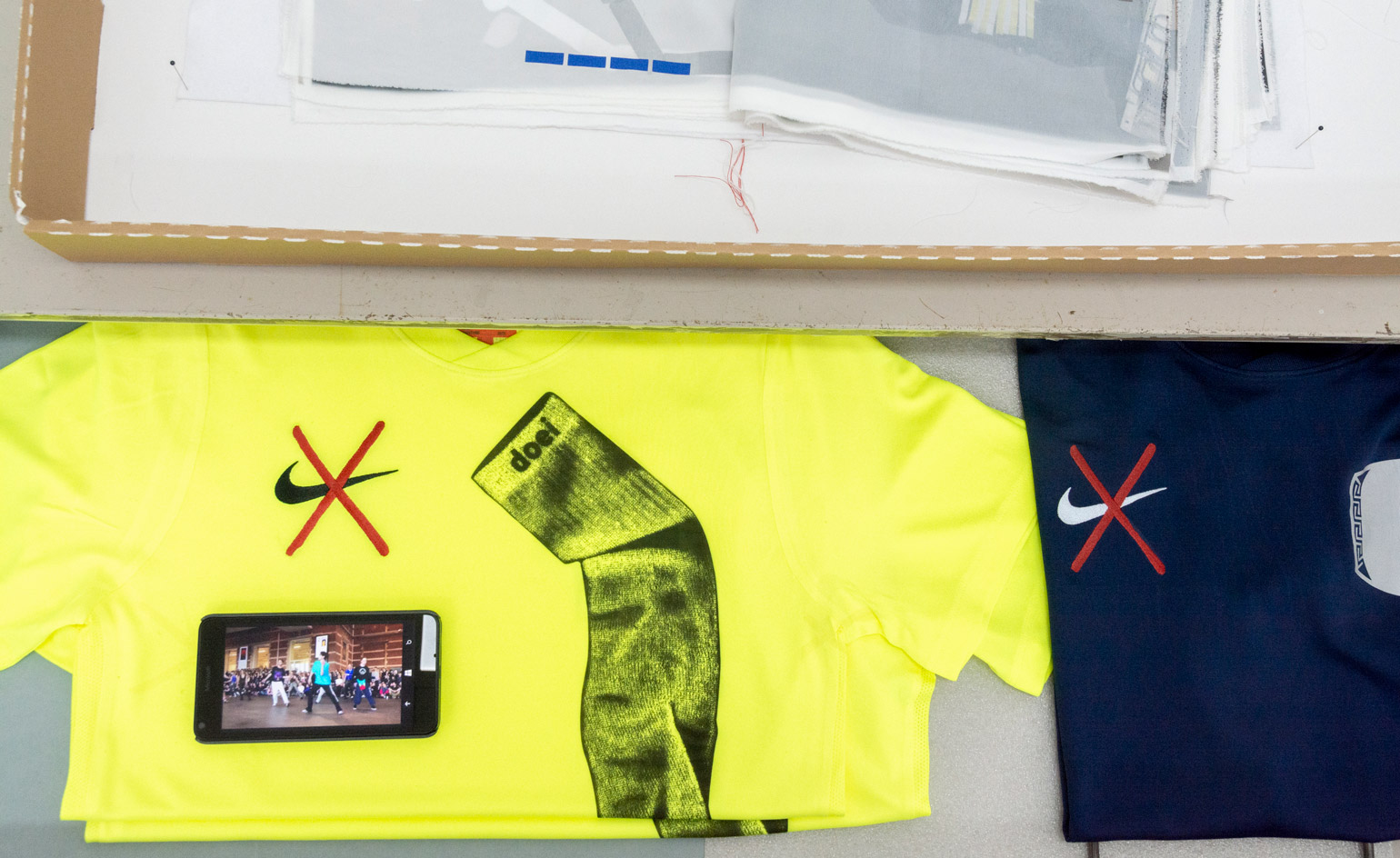
Installation view of ‘Avoidstreet = Clothes, Jpegs and Lyrics’. Photography: Dagmar Aarse
Leon’s approach was shaped by artist and academic Hito Steyerl’s influential 2009 essay In Defense of the Poor Image. Steyerl wrote about the hierarchy of high-definition, the sharing and re-sharing of visuals and how the formats through which we disseminate them alter their meaning. ‘The poor image has been uploaded, downloaded, shared, reformatted, and reedited. It transforms quality into accessibility, exhibition value into cult value, films into clips, contemplation into distraction,’ she said. Similarly, Leon liberates unwanted clothes from their démodé lull.
The look book for Leon’s first collection M&M is printed on A3 sheets of polyester and placed on top of a custom-made brass table. Part graphic design, part fashion, part soft sculpture, the piece has the feeling of a magazine but is floppy and uncomfortable. It has lost its function much like the past season clothes left to languish at the back of our closets. ‘Only now am I beginning to refine what I am doing and finding a practice in some ways. I like the idea of being this archeological designer that goes around the city looking for dead stock or through the wardrobes of friends, making interventions, talking to people. I like the idea of using clothes as a tool for intimacy,’ Leon says. ‘To start a conversation.’
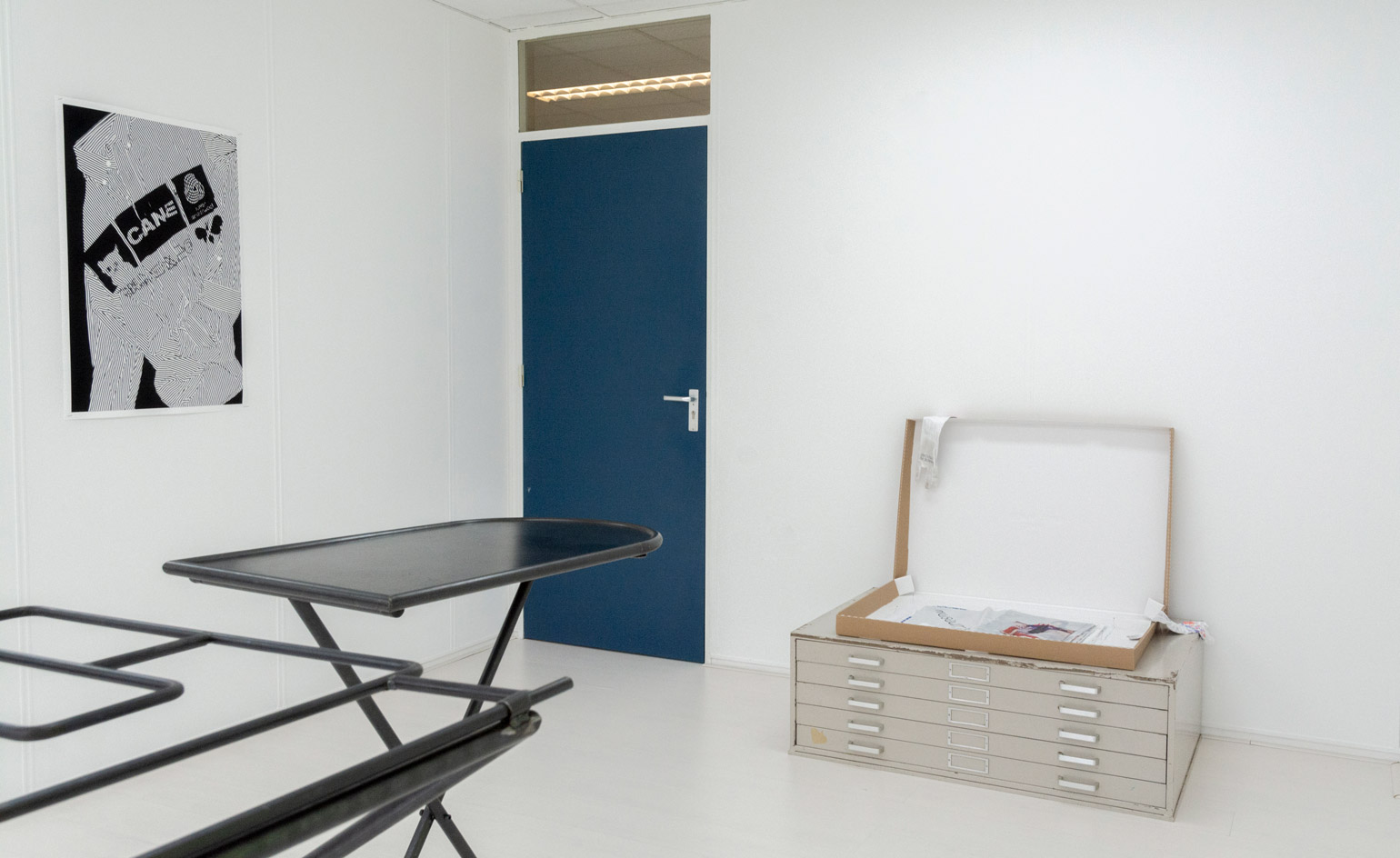
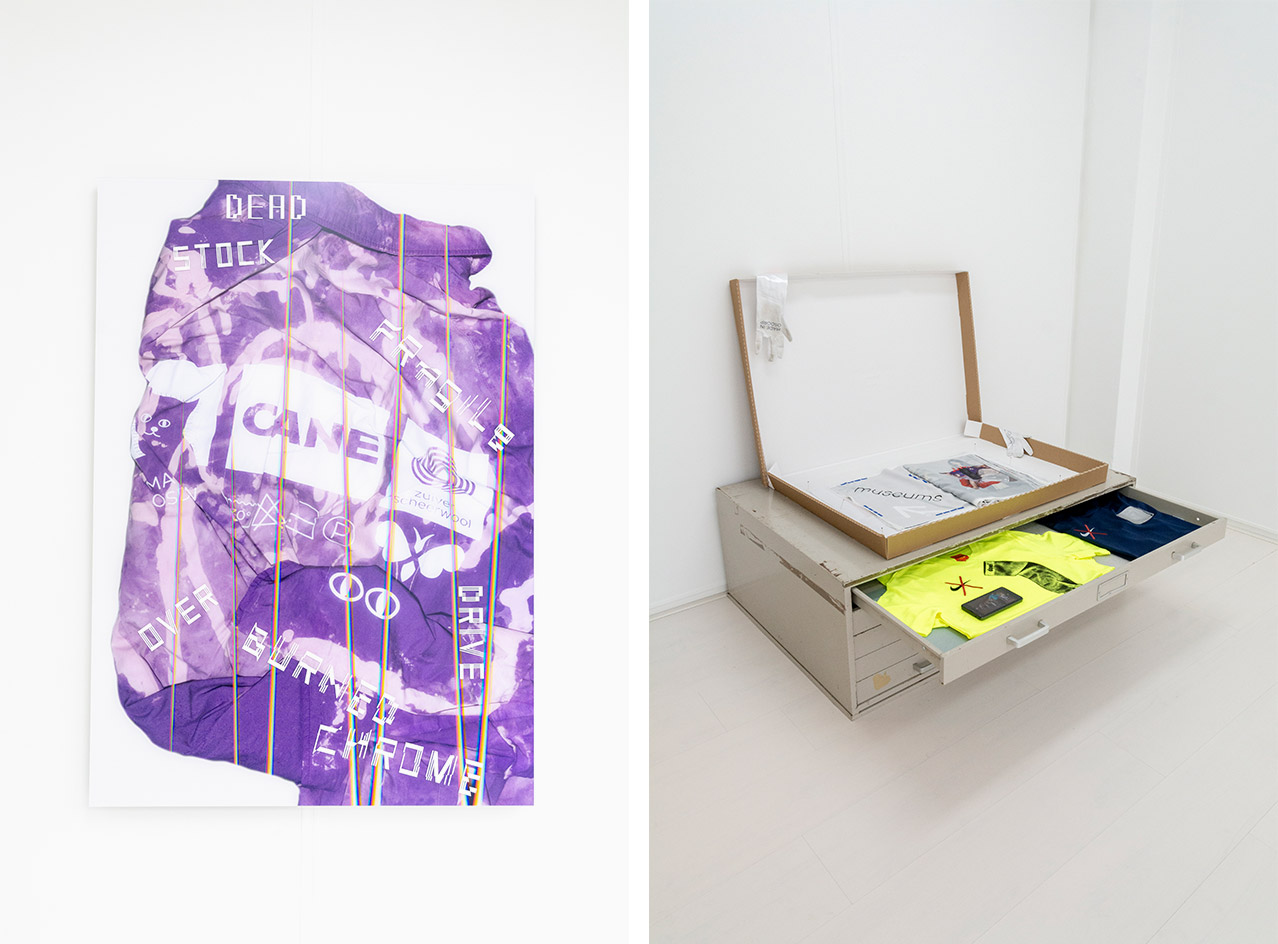
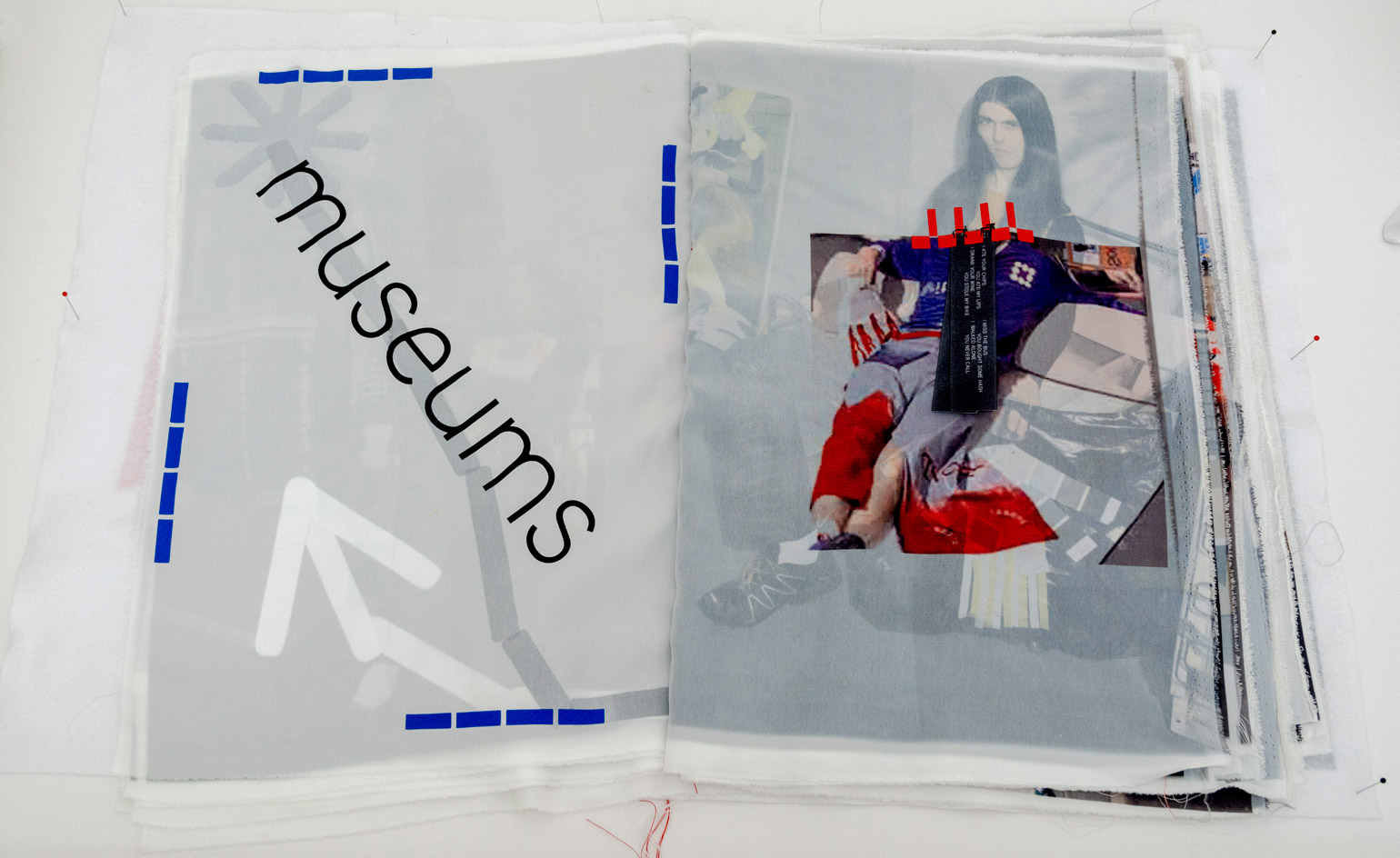
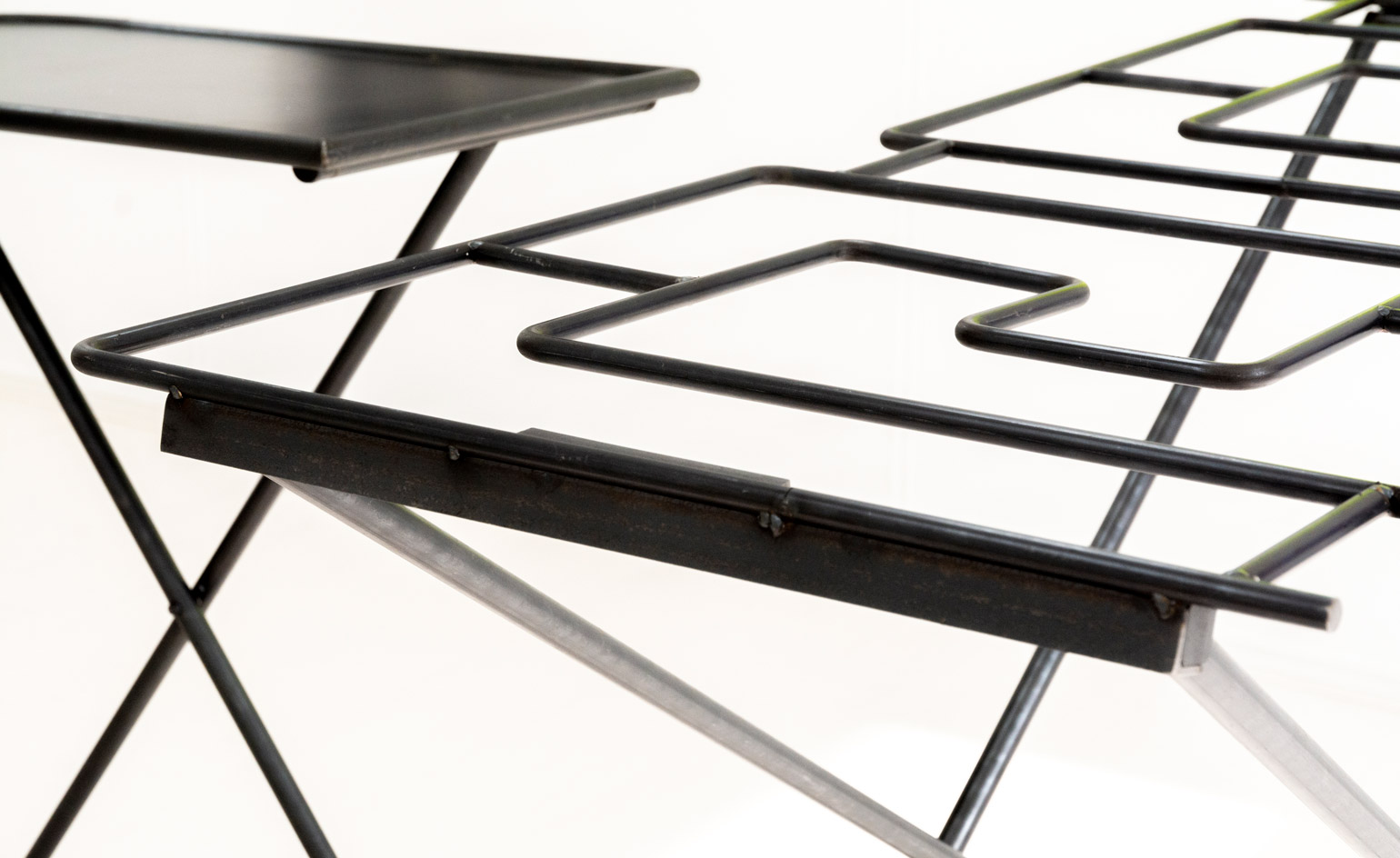
INFORMATION
‘Avoidstreet = Clothes, Jpegs and Lyrics' is on view until 8 June. For more information, visit the Lauwer gallery website.
ADDRESS
Wallpaper* Newsletter
Receive our daily digest of inspiration, escapism and design stories from around the world direct to your inbox.
Stadhouderslaan 9
2517 HV The Hague
The Netherlands
London based writer Dal Chodha is editor-in-chief of Archivist Addendum — a publishing project that explores the gap between fashion editorial and academe. He writes for various international titles and journals on fashion, art and culture and is a contributing editor at Wallpaper*. Chodha has been working in academic institutions for more than a decade and is Stage 1 Leader of the BA Fashion Communication and Promotion course at Central Saint Martins. In 2020 he published his first book SHOW NOTES, an original hybrid of journalism, poetry and provocation.
-
 Marylebone restaurant Nina turns up the volume on Italian dining
Marylebone restaurant Nina turns up the volume on Italian diningAt Nina, don’t expect a view of the Amalfi Coast. Do expect pasta, leopard print and industrial chic
By Sofia de la Cruz
-
 Tour the wonderful homes of ‘Casa Mexicana’, an ode to residential architecture in Mexico
Tour the wonderful homes of ‘Casa Mexicana’, an ode to residential architecture in Mexico‘Casa Mexicana’ is a new book celebrating the country’s residential architecture, highlighting its influence across the world
By Ellie Stathaki
-
 Jonathan Anderson is heading to Dior Men
Jonathan Anderson is heading to Dior MenAfter months of speculation, it has been confirmed this morning that Jonathan Anderson, who left Loewe earlier this year, is the successor to Kim Jones at Dior Men
By Jack Moss
